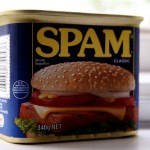 These days, the majority of email servers have an automatic spam filtering service. These spam filters are quite intelligent, but sometimes they can make mistakes and delete (or send to the spam box) completely valid emails. This is a very common problem, particularly with free or low cost email accounts. If you think that a lot of your emails are being filtered into the spam box by mistake, here are some simple tips to follow to avoid being classified as a spammer:
These days, the majority of email servers have an automatic spam filtering service. These spam filters are quite intelligent, but sometimes they can make mistakes and delete (or send to the spam box) completely valid emails. This is a very common problem, particularly with free or low cost email accounts. If you think that a lot of your emails are being filtered into the spam box by mistake, here are some simple tips to follow to avoid being classified as a spammer:
1. Always include a “pure text” section: even if they are written in an HTML format, personal emails always automatically include a section of pure text. If they don’t, the majority of spam filters flag them up as suspicious. After you have finished writing an email, use the SendBlaster “HTML Text” button to automatically create a pure text section from the HTML code.
2. Write, don’t draw: the main body of the message must be text. Avoid inserting too many images or images which make your email too large. Once again, spam filters can become suspicious if there appears to be more image than text.
3. Don‘t send too many attachments: attachments should only be used in small lists and should only be for personal reasons. If you publish a newsletter, instead of creating an attachment, upload the files directly to your website and insert a link in the text body. Receivers will also be a lot happier if they can open their emails quickly.
4. Don’t use the wrong words: avoid using words which will set off the spam filter’s alarm bells (you know – the ones which clog up your inbox on a daily basis).
5. Check that your email’s spam level is low: before sending your email, scan it with MailingCheck, our free software which checks the spam level in emails.
6. Choose to send your email with SMTP: direct delivery can be useful in many situations, but unfortunately, these days, many email servers refuse direct delivery in order to block spam. When sending multiple emails, it is a much better option to use a public SMTP server.